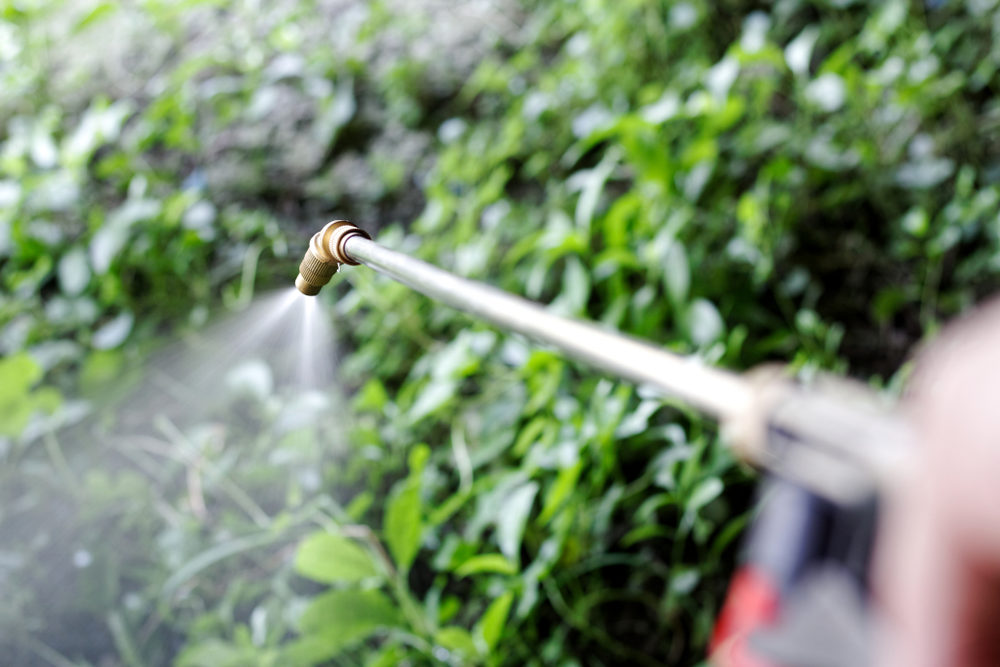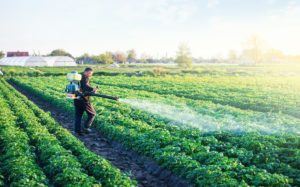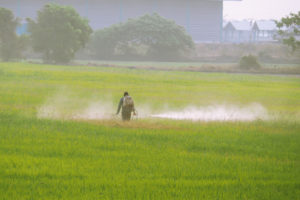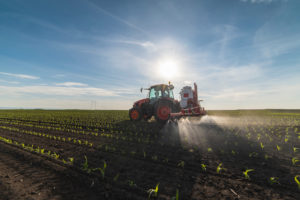
On Tuesday, May 25, two former Louisiana agricultural workers suffering from Parkinson’s disease filed historic lawsuits against the manufacturers of the herbicide, paraquat. The plaintiffs, including a former LSU AgCenter extension agent, worked in the Louisiana ag industry for decades and were exposed to the toxic chemical for years.
In 2020, the International Journal of Environmental Research and Public Health published a peer-reviewed study by three LSU researchers that found a clear correlation between Parkinson’s disease and the use of paraquat in rural areas of Louisiana.
The lawsuits, filed by the New Orleans firms of Herman, Herman & Katz, LLC and the Sangisetty Law Firm, allege that Chevron USA, Inc. and Syngenta AG failed to warn of the risk of contracting Parkinson’s disease from chronic, low-dose exposure to its powerful herbicide. Punitive damages are sought for alleged deceptive and unlawful marketing practices that misled consumers about the potential risks.
The Link Between Parkinson’s Disease And Paraquat
Parkinson’s disease is a progressive neurodegenerative disorder of the brain that primarily affects the motor system – the part of the central nervous system that controls movement. Symptoms of Parkinson’s disease include: resting tremors (shaking movement when muscles are relaxed), bradykinesia (slowness in voluntary movement and reflexes), rigidity (stiffness and resistance to passive movement), and impaired balance. There is currently no cure for the disease, and no treatment will stop or reverse its progression.
Paraquat was introduced into the United States in the 1960s and was marketed as a safe and effective method of controlling vegetation, weeds, and grass. Over the last two decades, paraquat has returned to popularity as vegetation has become resistant to other herbicides.
Paraquat causes or contributes to the degeneration or death of plant and animal cells, including dopaminergic neurons. When enough dopaminergic neurons die, dopamine production falls below the level the brain requires, resulting in the motor symptoms of Parkinson’s disease.
Over time, as agricultural workers are exposed to the herbicide, the chemical may be inhaled through the nose or mouth, absorbed through the skin, or otherwise enter the body. Unfortunately, those working with paraquat may not realize they have been negatively affected for years. Parkinson’s symptoms gradually begin and get worse over time.
In 2019, legislation was proposed to ban paraquat in the United States. H.R. 3817 (116th): Protect Against Paraquat Act was introduced by Rep. Nydia Velázquez. The bill would have prohibited the sale and use of the toxic herbicide, but it died in Congress without a vote.
Other countries around the world have banned the sale and use of paraquat. In 2007 the European Union banned the herbicide, but European manufacturers continue to manufacture and export the chemical worldwide to the U.S., South America, Asia and Africa.
Will Nationwide Paraquat Cases Be Consolidated Into Multidistrict Litigation (MDL)?
The recently filed lawsuits brought on behalf of Louisiana agricultural workers may soon be consolidated with other paraquat cases filed nationwide. The consolidation of such cases into what is commonly called multidistrict litigation (MDL) often occurs in complex product liability litigation, where a significant number of cases are filed in courts across the country over similar injuries caused by the same dangerous product. Consolidation before one judge is intended to reduce duplicative discovery, serve the convenience of common witnesses, and avoid conflicting pretrial rulings.
On May 27, 2021, the U.S. Judicial Panel on Multidistrict Litigation (JPML) is scheduled to hear arguments in Washington D.C. about whether the paraquat cases should be transferred to one judge. Many lawyers believe consolidation of these cases is likely given the number of cases filed to date and the fact that the defendant manufacturers do not oppose the creation of a Paraquat MDL. If the JPML determines consolidation is warranted, it will then have to decide which federal judge will oversee the litigation.
If a Paraquat MDL is created, cases filed in federal courts all over the country will be transferred to one court for pre-trial proceedings. The judge presiding over the MDL will appoint a leadership structure for the plaintiffs, typically called the Plaintiff’s Steering Committee (PSC). The PSC is made up of a small group of lawyers assigned the task of representing the common interests of all MDL plaintiffs.
After common discovery is completed in the MDL, a series of early “bell weather” trials will likely be conducted to determine how juries respond to certain evidence that will be presented throughout the litigation. If individual cases are not settled or otherwise resolved following the MDL proceedings, each individual case may be transferred back to the federal court where it was originally filed for a separate trial in the future.
Stephen J. Herman, who served as co-lead counsel for the plaintiffs in the MDL that followed the BP oil spill, sees the consolidation of paraquat cases as a leveling tool for those hurt by the toxic herbicide. “An MDL allows, indeed requires, the best lawyers from around the country to pool their knowledge, experience, and financial resources, so that the family farmer in Ruston can go toe-to-toe with a company like Chevron and its minions of attorneys,” Herman said. “With our track record in these cases and decades-long relationships with the nations’ leading firms, Herman, Herman & Katz is uniquely positioned to fight for Louisiana ag workers in this potential MDL.”

Herman Herman Katz is dedicated to achieving justice for our clients. We excel in a wide range of practice areas throughout Louisiana, and our personal attention, experience and commitment achieve the results our clients deserve. Our Louisiana personal injury lawyers are here to aggressively pursue justice on your behalf and help you get back on your feet. If you or a loved one has suffered a personal injury, learn about your legal rights from our experienced lawyers by calling 844-943-7626.














One Comment
Nunnery Lisa
Both of my parents have been diagnosed with Parkinson’s.
They have a camp house that is across the river from farm land that was sprayed often by crop dusters.
What are the chances of both parents being diagnosed with the same disease?
Comments for this article are closed.